Featured In The Franciscan Way Magazine: Spring 2025
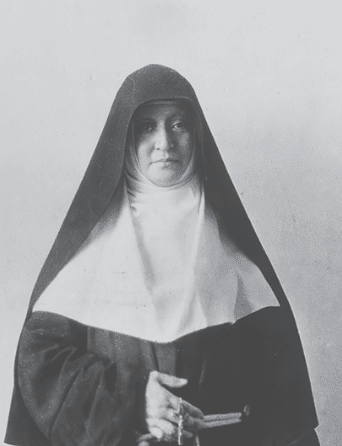
On a fall day in mid-October, 1875, Poor Clare Sister Mary Magdalen, born Annetta Bentivoglio, disembarked from the Castalia in New York City with little to her name other than correspondence from Vatican officials and the knowledge that she had the firm support of Pope Pius IX. She was accompanied by her blood sister, Constance, also a Poor Clare, and a Franciscan priest, who left the sisters soon after they landed for a Manhattan friary. Perhaps he was intimidated by the daunting task that Sister Mary Magdalen was determined to undertake: establishing a contemplative community in this burgeoning New World.
“I am sending you to a pagan land,” the pope is said to have told Sister Mary Magdalen.
Her journey – which included bouts of seasickness – began what would be Mother Magdalen’s legacy. She came from a prominent Catholic family, her father serving as an officer in the pope’s army. At the time, the Old World was wracked with conflict, as both religious and secular wars consumed Italy. Mother Magdalen, then in her early forties, was moving to a vast mission territory where hospitals and schools were opening to serve a growing Catholic immigrant population, which often faced a cool welcome from their more established Protestant American neighbors.
Amid this frantic activity, her goal was to establish communities of contemplative sisters living Franciscan spirituality.
She quickly received a clear message from a series of bishops: Not so fast. She was told that in a rapidly growing church, the need for teachers, social workers, and catechists was evident, not so much a contemplative community that lived on donations in the United States.
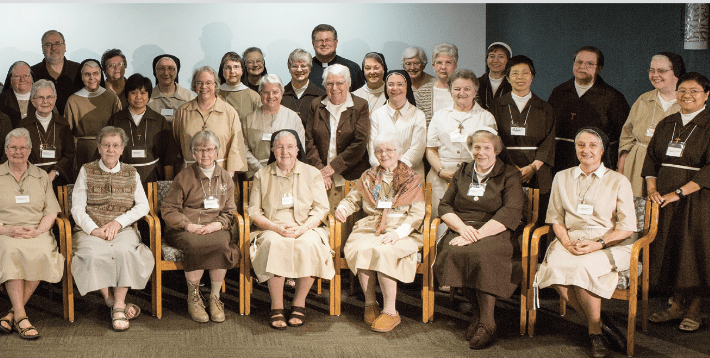
The sisters enlisted the help of Paulist Father Isaac Hecker, who assisted them in making introductions. Cardinal John McCloskey of New York said no to a contemplative religious community dependent on donations. They traveled south to Philadelphia, where they gained support from Mrs. F. A. Drexel, but the archbishop there saw little use for their ministry. There was the promise of land awaiting them in rural Minnesota, but that was slated for creating a girls’ school, a different ministry from the cloistered tradition of the Poor Clares. They were able to land for a short while first in New Orleans and then with a German Franciscan community, but cultural and language differences made that relationship untenable.
Communications with Rome were poor. They could have used cellphones. Instead, correspondence took months to go back and forth across the ocean. But the letters that did arrive from the Vatican urged the sisters to maintain their commitment to a contemplative life. It offered little advice in selling that idea to American bishops.
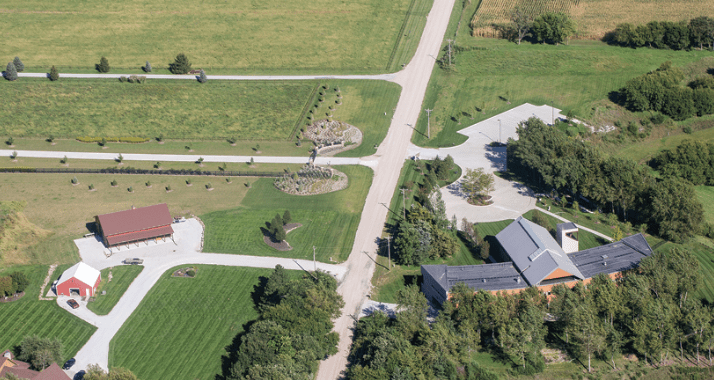
“It didn’t go well,” said Sister Colleen Byrne, a Poor Clare Sister celebrating the community’s 150th anniversary of its American founding this year, describing the early struggles to find a foothold in the New World. Cardinal McCloskey, for one, was a church leader who “valued sisters who taught and nursed. He didn’t think they could afford them,” she said about the sometimes icy reaction to the idea of establishing a contemplative religious community in the United States. It was not until 1878, when the sisters arrived in Omaha, Nebraska, that they found a permanent home, eventually expanding to establish communities first in New Orleans and then Evansville, Indiana.
Sister Colleen lives in a community in Spokane, Washington, a group that traces its roots to the Omaha cloister founded by Mother Magdalen.
The Poor Clares were able to establish a permanent home in Omaha through the support of John Creighton, a prominent Catholic layman, and Bishop James O’Connor. From that base, they spread outwards.
There were regular obstacles in developing the community. Sister Constance was fleeced by an unscrupulous charlatan during a West Coast fundraising trip. Before its completion, the Omaha monastery was twice destroyed by tornadoes. Money always remained an issue, with periods during which the sisters did without many necessities. But there was joy in the community when the document authorizing the first Poor Clare monastery in the United States was issued in Rome on November 15, 1881.
Wherever they have gone, said Sister Colleen, the Poor Clares have proven the early doubters wrong, becoming integral to the life of the communities where they have settled. She said that the Poor Clares’ commitment to contemplative prayer in the Franciscan tradition “is at the heart of the church. They have a deep connection to the people. They are at the center of the prayer life of the people.”
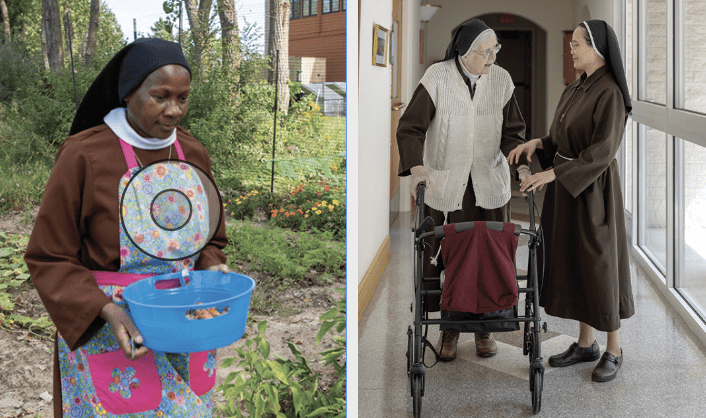
Their prayer life regularly draws in those on the outside seeking spiritual support in their busy lives. A regular part of their life is receiving visitors with prayer requests.
In Spokane, friends in the residential community of the Poor Clares’ monastery will come to the door with prayer requests. A few years ago, a woman sought prayers to conceive a child. Years later, after she and her husband celebrated the birth of their fourth child, she was able to joke that her prayers were answered perhaps too abundantly.
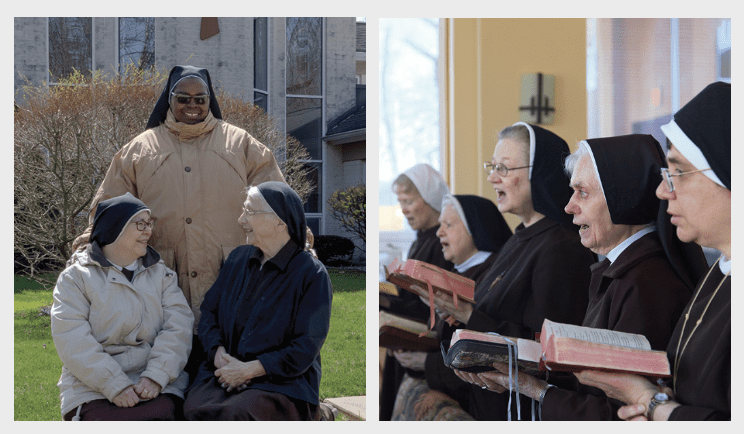
For 20 years, the Spokane monastery served as a part of the diocese’s media ministry, operating a radio station that reaches out to Catholics and non-Catholics throughout Eastern Washington State and nearby Idaho. When an ice storm struck the city in the 1990s, the sisters opened their doors to their neighbors who had no electricity or heat.
After Hurricane Katrina ravaged New Orleans in 2005, the Poor Clares in that city found temporary shelter in Texas for months, with another Poor Clares’ community that they had hosted after that group was forced to flee Cuba. But soon they returned to New Orleans, encouraging their lay friends to begin rebuilding.
Sister Charlene Toups, abbess of the New Orleans community, late last year supervised the move of four Poor Clare Sisters to a downsized house, near their historic site in the university neighborhood near Tulane and Loyola. Though they are diminished in numbers, she is expecting laypeople to continue to seek out the sisters for their prayers.
“It’s amazing how people count on us,” she said. New Orleans, with its reputation as a raucous port city where varied cultures connect in joyous celebrations, such as Mardi Gras, contrasted with a history of racial and ethnic tensions, seems an unlikely place for a contemplative community. Yet the Poor Clares are perhaps more needed there than in quieter places.
The group returned to New Orleans after Katrina, even though they could have remained in Texas, because “people count on our presence and our prayers. We had a sense we were needed here.” Speaking just days after the Bourbon Street New Year’s terrorist attack, in which 14 local people and tourists were killed, Sister Charlene said that spiritual support remains necessary.
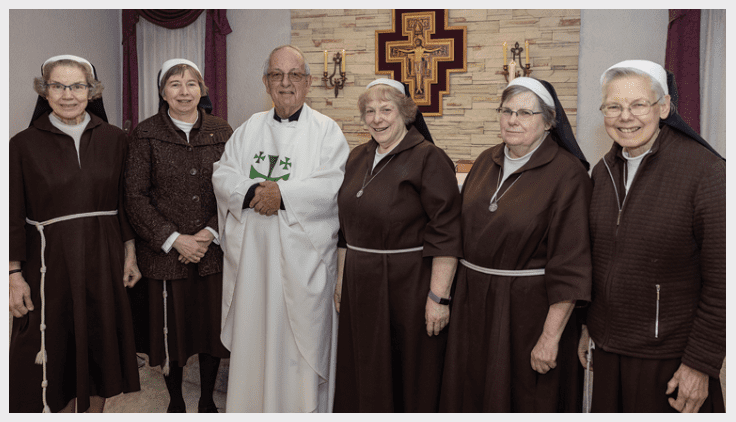
“Although they are cloistered, their relationship with the world and its people is a deep one,” said Father Joseph. “The people support them.”
Perhaps, in a deeper sense the sisters provide witness that a life devoted to prayer remains a valuable vocation, noted Sister Jane Marie DeLand, who spent 35 years in the Poor Clares community in Evansville. Two years ago she moved to a Third Order Franciscan community in Oldenburg, Indiana, as the Evansville monastery was disbanded due to an aging and declining membership.
Sister Jane Marie entered the community as a 48-year-old. She was older than most new vocations and joined a community that numbered 21 at the time. In her lay life, Sister Jane Marie worked as a psychiatric nurse.
“It was wonderful,” she recalled of her years at the monastery. She used her nursing skills to help the other sisters. The community made altar breads to support themselves and lived a prayer life devoted to the Liturgy of the Hours. Catholics in and around Evansville would prayers.
The Evansville community, founded in 1897, was Mother Magdalen’s final foundation, and was the site of her death in 1904.
Just before her death, she arranged for sisters to establish a foundation in the Boston area, which continues with an 11-member community in Westwood, Massachusetts.
Sister Mary Francis Hone, the community’s archivist, has spent 70 years with the Poor Clares, first in their monastery in Jamaica Plains and now in Westwood. The Poor Clares’ ministry, she said, provides a powerful witness.
“We are, first of all, a life of prayer. That enables people to focus on God. We are the presence of God for the people,” she said, noting that, as in most Poor Clare communities, a lay community seeking out their spiritual support has grown up around the Massachusetts monastery.
While the Poor Clares are cloistered, they are not far from the wider community, emphasized Sister Mary Francis. “It’s a Franciscan spirituality. We are among the people.”
The Massachusetts community is part of what Sister Magdalen brought to the New World. She personally founded three monasteries, but they later grew to include 22 Poor Clare monasteries following the community’s rules in the United States, two in Canada, one in Japan, two in Korea, one in Guatemala and two in South America. All these houses trace their origins back to the first American foundation at Omaha. Eventually, in all the cities Mother Magdalen visited, a foundation of Poor Clares was established, the last being Cincinnati in 1990.
As it was in 1875, the contemplative life of the Poor Clares remains a tough sell, both in and outside the church. In a materialistic world, the value of a vocation devoted to prayer often receives scant support. Still, there is hope that the vision of the determined Mother Magdalen will continue.
Sister Charlene is encouraged by increased interest in the spirituality of Clare, the Italian saint who, with St. Francis, helped reform religious life and was known for her love for the poor and the spiritually suffering.
“There are vocations,” said Sister Jane. “But I think people are not responding to them. It’s there, but people don’t know about us. It’s hard to make contemplative devotion to prayer attractive to younger people.”
In October, the Poor Clare houses will mark their American founding with quiet prayer, seeking out God’s Wisdom for a contemplative community here in a world as busy as ever but still in need of serious reflection and contemplation.
